Dmitry Lysov is a first-year Master's student at the Faculty of Chemical, Biological, and Geographical Sciences at Vitebsk State University named after P.M. Masherov and a Specialist at the republican unitary enterprise GEOSERVICE. His research focus is on the reuse of fill soils in construction. This involves studying soil compaction and self-compaction, as well as comparing strength and deformation parameters in this process.
– Let's say there's a gully or vacant lot that's mapped in the general development layout, and in 10-20 years, they'll start building something there. Until then, they just fill it up without any control. Before starting to develop the territory, these volumes of soil have to be removed, which is itself costly, and the site has to be prepared again. But if it is initially filled following a specific procedure and with an understanding of the parameters, then this territory may easily be suitable for construction, including for 2-5-story buildings, without removing soil, - explained the master’s student.
At KarRC RAS, Dmitry Lysov went through practical training in geophysics under the guidance of Pavel Ryazantsev, Leading Researcher at the Institute of Geology KarRC RAS. The scientists focused primarily on the use of ground-penetrating radar (GPR) and electrical resistivity tomography (ERT) methods using the Omega-48 instrument system and various software programs.
– GPR is used quite widely in Belarus, particularly in the inspection of building structures. But this is the first time I see 2D and 3D electrical resistivity imaging—it's an interesting and efficient technique, – noted Dmitry Lysov.
He explained that in construction, particularly in the gas and petrochemical industries, it is necessary to determine the soil's specific resistivity in order to calculate for grounding. Liquids in pipelines create a current that causes metal corrosion. To minimize the damage — to reduce the corrosion of metal structures and pipes — it is important to understand the electrical conductivity of the soil. Nowadays, it is determined by the vertical electrical sounding (VES) method, and usually three people are involved in this work.
– The 3D electrical resistivity imaging system is much better: its output is more accurate, the processing quality is higher, and the labor and time costs are three times lower. It can be handled by one person. In addition, 3D models can quite clearly image soil anomalies and defects in structures. We rarely use it, but it is worth adopting, - said Dmitry Lysov, evaluating the results of the internship.
During his trip, the guest from Vitebsk had time to see Petrozavodsk and visit some sights in the Prionezhsky and Kondopozhsky districts of the republic, including the Girvas paleovolcano and the Kivach waterfalls. In the city, Dmitry Lysov was particularly impressed by the Onego lakefront and the outdoor gym installed along the shore.
As a reminder, there is a cooperation agreement between the Karelian Research Center RAS and the Vitebsk State University. One of the cooperation formats is participation of students, doctoral students, and young scientists in events organized by the parties.
News
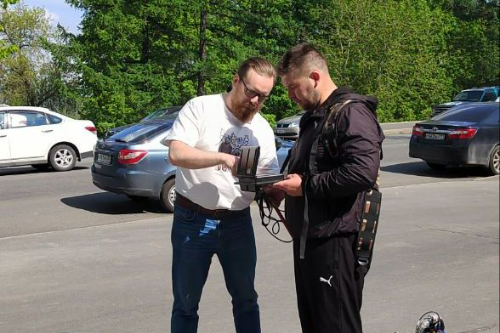
June 6, 2025
Study trip to KarRC RAS helps specialist from Vitebsk master new electrical resistivity imaging techniques, with applications in construction
Cooperation of Karelian Research Center RAS with Vitebsk State University continues. On June 5, the University's Master's student Dmitry Lysov completed his practical training course. The construction industry specialist studied the geophysical methods used by researchers at KarRC RAS.
Cooperation of Karelian Research Center RAS with Vitebsk State University continues. On June 5, the University's Master's student Dmitry Lysov completed his practical training course. The construction industry specialist studied the geophysical methods used by researchers at KarRC RAS.
See also:
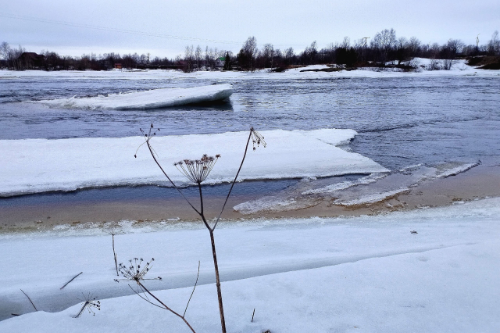
June 26, 2025
Ice-related phenomena on rivers emptying into the White Sea now last three weeks less than 60 years before
Ice on northern rivers now forms later while ice-off occurs earlier. Karelian scientists confirmed this having analyzed 64 years of marine and meteorological data from the estuaries of rivers draining into the White Sea along its western coast. Climate change has bit three weeks off the ice-covered period on these rivers. The reductions have been the most significant in the last 30 years, aligning with global warming trends in Arctic water bodies.
Ice on northern rivers now forms later while ice-off occurs earlier. Karelian scientists confirmed this having analyzed 64 years of marine and meteorological data from the estuaries of rivers draining into the White Sea along its western coast. Climate change has bit three weeks off the ice-covered period on these rivers. The reductions have been the most significant in the last 30 years, aligning with global warming trends in Arctic water bodies.

June 23, 2025
Citizen science and web technologies help researchers study insects of Karelia
More than 30 insect species not encountered in Karelia previously have been revealed by entomologists from KarRC RAS during their expeditions and using data communicated by active participants of the iNaturalist portal – an open platform for collecting biodiversity data.
More than 30 insect species not encountered in Karelia previously have been revealed by entomologists from KarRC RAS during their expeditions and using data communicated by active participants of the iNaturalist portal – an open platform for collecting biodiversity data.
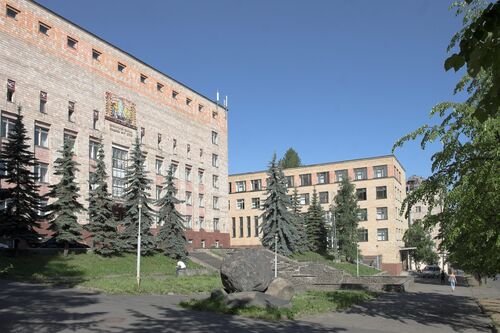
June 20, 2025
Application process for 2025/2026 Doctoral Studies started at KarRC RAS
On June 20, Karelian Research Centre RAS began accepting papers from applicants for its Doctoral Courses. This year, university graduates can choose from ten academic specialties in the STEM, natural sciences, humanities, and social sciences.
On June 20, Karelian Research Centre RAS began accepting papers from applicants for its Doctoral Courses. This year, university graduates can choose from ten academic specialties in the STEM, natural sciences, humanities, and social sciences.
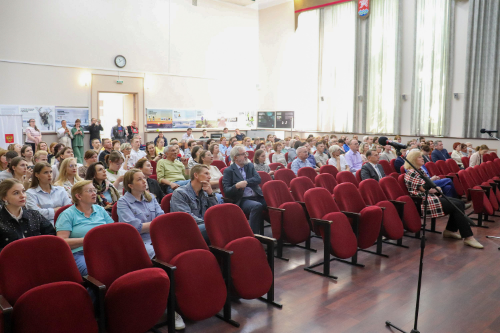
June 17, 2025
An important phase of the KarRC RAS Director General election procedure completed
The Electoral Commission has summarized the results of the voting for the election of the Director General of KarRC RAS. The turnout exceeded 80% of the Center's employees. The majority of votes, 391, were cast for Alexander Kryshen, Director of the Forest Research Institute. Acting Director General Olga Bakhmet was supported by 252 voters, and Deputy Director General Yuri Zaika received 17 votes. The Electoral Commission documented these results in its report, which will be submitted to the HR Policy Department of the Federal Ministry of Science and Higher Education. The candidacies will now undergo the procedure of approval by federal agencies, after which the employment contract will be signed with the winner of the competition.
The Electoral Commission has summarized the results of the voting for the election of the Director General of KarRC RAS. The turnout exceeded 80% of the Center's employees. The majority of votes, 391, were cast for Alexander Kryshen, Director of the Forest Research Institute. Acting Director General Olga Bakhmet was supported by 252 voters, and Deputy Director General Yuri Zaika received 17 votes. The Electoral Commission documented these results in its report, which will be submitted to the HR Policy Department of the Federal Ministry of Science and Higher Education. The candidacies will now undergo the procedure of approval by federal agencies, after which the employment contract will be signed with the winner of the competition.
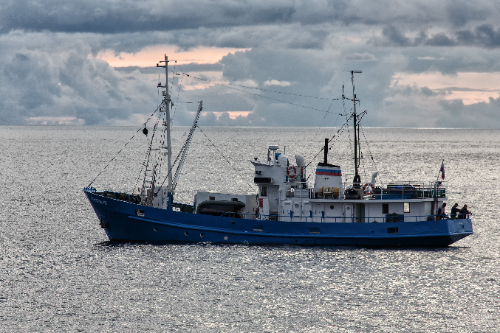
June 11, 2025
Posseidon research vessel is back from this season’s first integrated expedition
Employees of the Northern Water Problems Institute KarRC RAS completed an expedition around Lake Onego on board the Posseidon research vessel. The expedition covered 19 sites in bays, Central Onego, and Kizhi Skerries region. Scientists have sampled water for chemical and biological analyses.
Employees of the Northern Water Problems Institute KarRC RAS completed an expedition around Lake Onego on board the Posseidon research vessel. The expedition covered 19 sites in bays, Central Onego, and Kizhi Skerries region. Scientists have sampled water for chemical and biological analyses.



